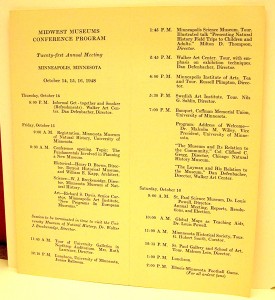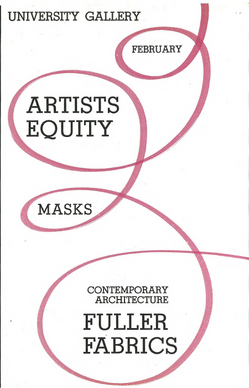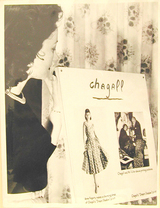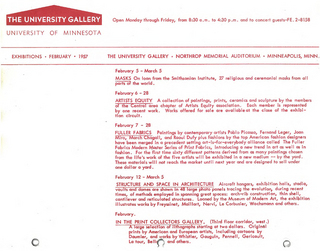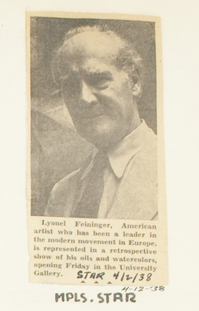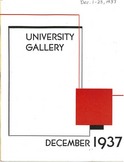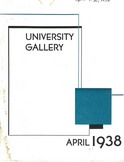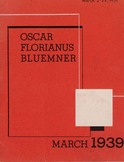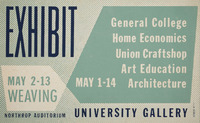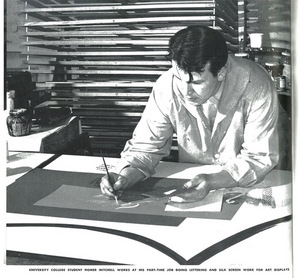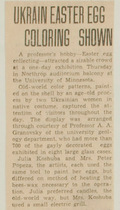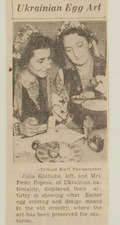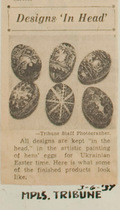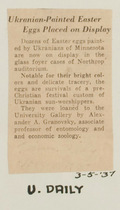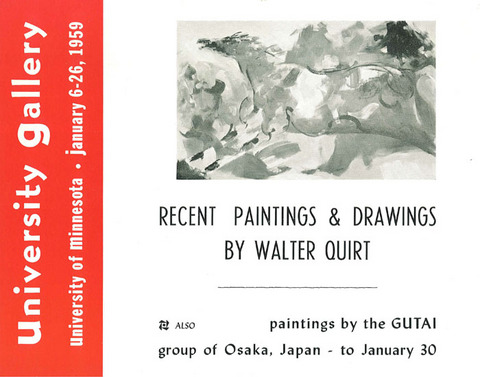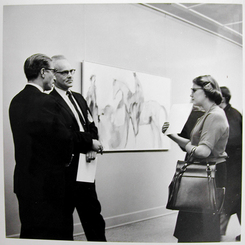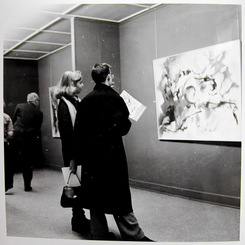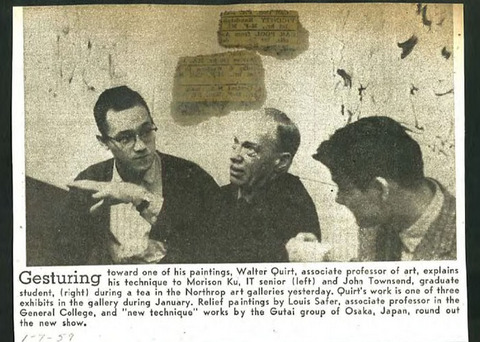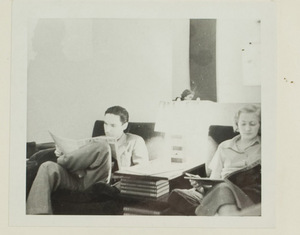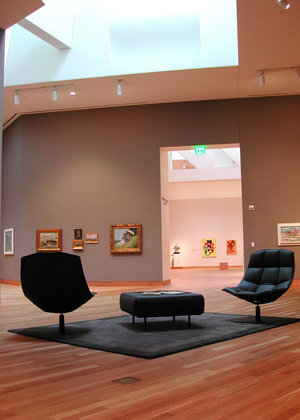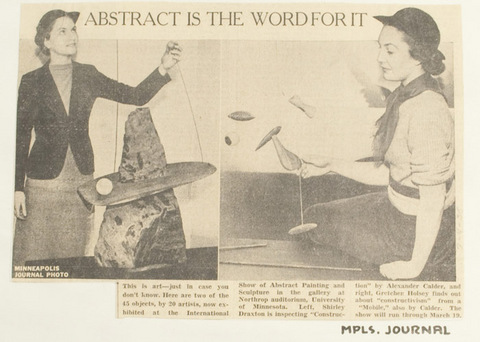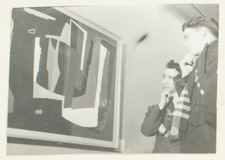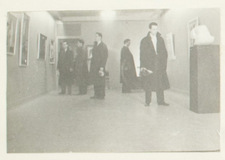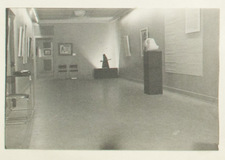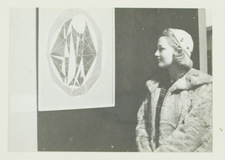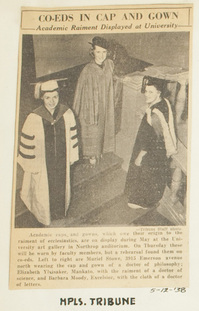
When a University of Minnesota senior and fellow member of the WAM Collective, eager (and hopefully not beleaguered) to graduate, questioned the group recently about the purchase of his cap and gown, I was reminded of an exhibition that the University Gallery held in 1938 on the topic of Academic Dress.
The University Gallery Press books featured an article clipped from the University’s humor magazine, Ski-U-Mah titled, “For a Cap and Gown,” written by Bill Sims, that light-heartedly reported upon the regalia of academic dress in 1938:
“Those who were on hand to witness the traditional Cap and Gown Day procession as it wound its way through the campus, over the knoll and eventually up the steps to Northrop Auditorium, watched half puzzled and awed by the razzle dazzle and color, pomp, clicking cameras and showy corsages.
After the seniors came the faculty in their flowing gowns and bright hoods. Oh, what my dead grandmother wouldn’t have done for just one small piece out of each of those brilliant hoods that filed past! What a crazy quilt that would have made!”
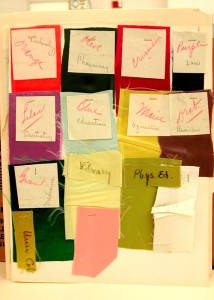 The exhibit was arranged by Ruth Lawrence, who in addition to her role as curator of the Gallery, also served on the University’s Functions Committee where for several years she assisted in formal preparations for graduation ceremonies, and even designed uniforms for a Grand Marshall and two assistants that became part of the ceremony. “A crazy quilt” of fabric swatches that represented the colors of academic dress were found charted on a piece of paper in a folder titled, “Ruth Lawrence: University Committees Correspondence.”
The exhibit was arranged by Ruth Lawrence, who in addition to her role as curator of the Gallery, also served on the University’s Functions Committee where for several years she assisted in formal preparations for graduation ceremonies, and even designed uniforms for a Grand Marshall and two assistants that became part of the ceremony. “A crazy quilt” of fabric swatches that represented the colors of academic dress were found charted on a piece of paper in a folder titled, “Ruth Lawrence: University Committees Correspondence.”
Sims’ description of the costumes continued with some background:
“The people who wear these fine letters have honorary or high academic degrees. The color of the trimming on the hood signifies the wearer’s degree; the color of the lining tells what university he wrested it from.
It’s a great show, this academic style parade, and well worth an hour of anyone’s idle attention. It’s all done to a code- the International Code of Academic Costume…”
…The history of academic costume is quite a yarn, and if you ever get caught with a case of mumps or something I suggest you catch up on it, if you can’t think of anything else to do.”
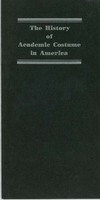 In May of 1938, this “yarn” of a history was displayed at the University Gallery, where close to 100 examples of robes in the U of M academic dress as well as examples from Harvard University, University of Toronto, and the University of Leeds, England were displayed. A catalogue of the exhibition (at left) described the history, rules, and regulations of academic dress. Published by Cotrell & Leonard, Albany, N.Y., and printed and distributed for the Intercollegiate Bureau of Academic Costume, “The History of Academic Costume in America” supplemented the show.
In May of 1938, this “yarn” of a history was displayed at the University Gallery, where close to 100 examples of robes in the U of M academic dress as well as examples from Harvard University, University of Toronto, and the University of Leeds, England were displayed. A catalogue of the exhibition (at left) described the history, rules, and regulations of academic dress. Published by Cotrell & Leonard, Albany, N.Y., and printed and distributed for the Intercollegiate Bureau of Academic Costume, “The History of Academic Costume in America” supplemented the show.
All yarns aside, in the publication, Gardner Cotrell Leonard wrote an opinion on the reason that such standards for academic dress were established and for what the standards symbolized:
“On its history and picturesque side it serves to remind those who don it of the continuity and dignity of learning. On its democratic side, it subdues the differences in dress arising from the differences in taste, fashion, manners and wealth, and clothes all with the outward grace and equal fellowship which have ever been claimed as an inner fact in the republic of learning.”
While soon to be graduates in the areas of public health and pharmacy may challenge the taste and fashion of salmon pink and olive, they never-the-less will walk across the stage with outward grace as they receive the diplomas that acknowledge the dignity of their learning.
Congratulations 2012 University of Minnesota graduates!
